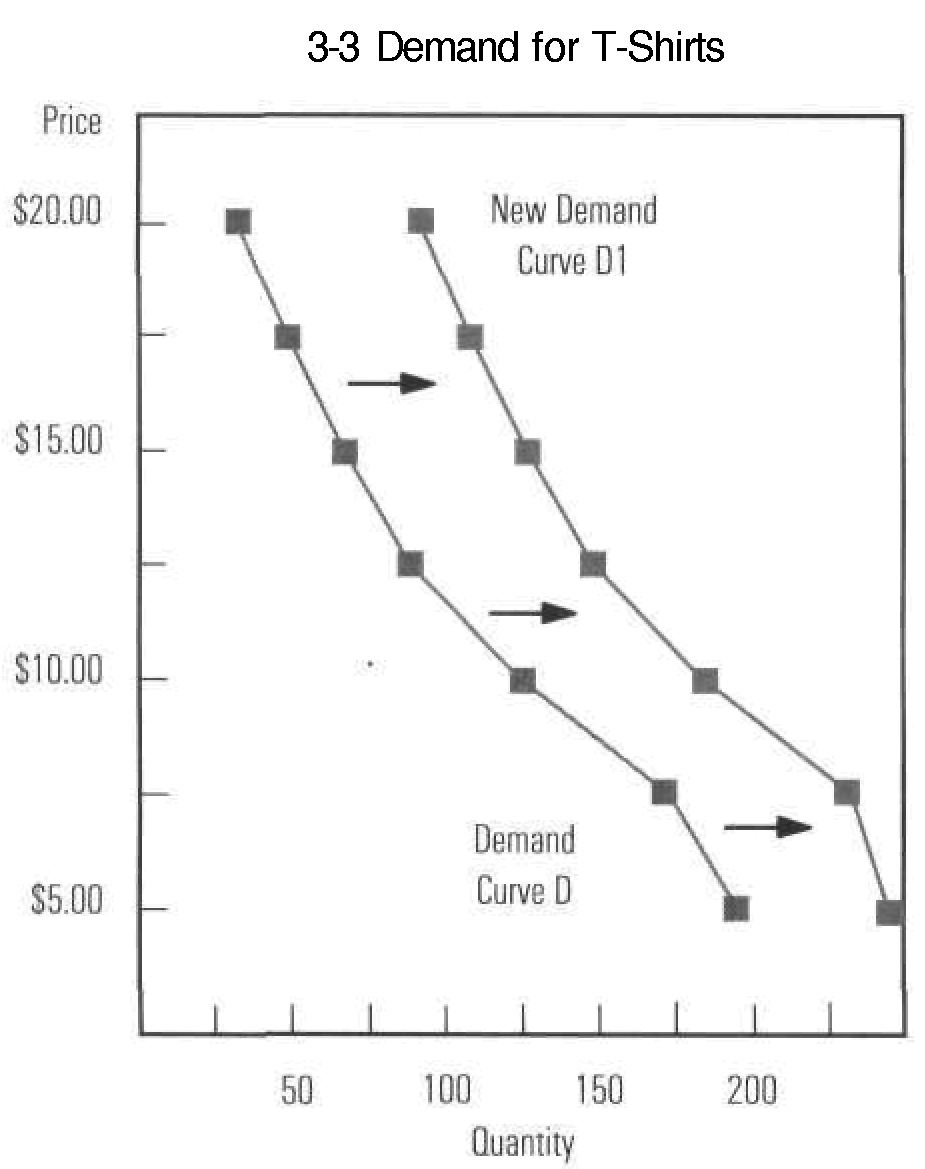
3.4. Elasticity of Demand
While demand curves always slope downward from left to right, the shape and slope of the demand curves for different products often are quite different. If the price of a quart of milk were to triple from $.80 to $2.40, people would buy less milk. If the price of cola drinks were to triple from $1 to $3 a quart, people would buy less cola. But even though both prices changed by the same percentage, the decrease in milk sales would probably be far less than the decrease in cola sales. This is because people can do without cola more easily than they can do without milk. The quantity of milk purchased is less sensitive to changes in price than is the quantity of cola. Economists would explain this by saying that the demand for cola is price elastic and the demand for milk is price inelastic. Elasticity describes how much a change in price affects the quantity demanded.

Why Is the Elasticity of Demand Different for Different Goods and Services? When the demand for an item is inelastic, a change in price will have a relatively small effect on the quantity demanded. When the demand for an item is elastic, a small change in price will have a relatively large effect on the quantity demanded. The demand for some goods and services will be inelastic for one or more of the following reasons:
• They are necessities. Regardless of a change in price, buyers continue to purchase necessities. Bread, milk, gasoline, and similar products have inelastic demand curves.
• It is difficult to find substitutes. Cola has an elastic demand curve because it is easy to substitute fruit juices, mineral water, or other carbonated drinks for cola. But, there are few substitutes for milk.
• They are relatively inexpensive. People are less likely to change their buying habits when the price of something that is relatively inexpensive is increased or decreased. If, for example, the price of an item were to double from 10 cents to 20 cents, it would have less of an effect on demand than if the price had gone from $250 to $500.
• It is difficult to delay a purchase. When your car is running out of gas, it is not always possible to shop for the best deal.
How Elasticity Is Measured. Elasticity can easily be measured by the "revenue test." Total revenue is equal to the
price times the number of units sold. If a price increase causes total revenue to fall, then demand would be described as elastic. If total revenue increases following a price increase, the demand would be inelastic between those two prices.
Similarly, if the price decrease led to a fall in total revenue, the demand for the item would remain inelastic. But if total revenue rose following a price decrease, demand would be elastic.
Super Sally's Market sells 500 quarts of milk and 100 quarts of cola daily. At $.80 a quart she earns $400 for milk. At $1 a quart she receives $100 for cola. Last week she increased milk and cola prices by 50 percent-milk sold for $1.20 a quart, and cola for $1.50. Following the price increases, milk sales slipped to 350 quarts daily, while soda sales dropped to 35 quarts.
Total milk revenue rose to $420 following the price increase, because the demand for milk is inelastic. Total cola revenue fell to $52.50, so one can say that the demand for cola is elastic.
